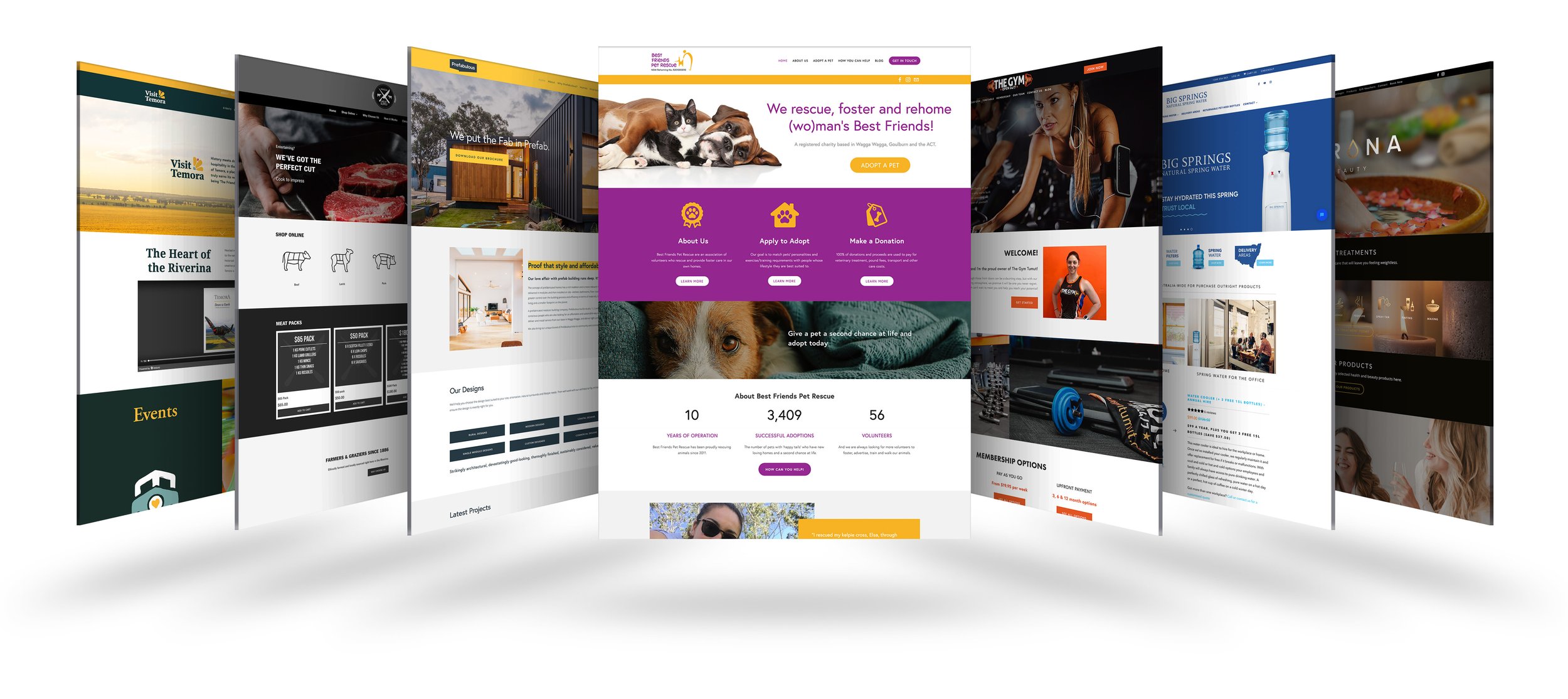Leading Tips for Developing an Impactful Site Layout That Converts
In today's digital landscape, the significance of an impactful web site layout can not be overstated, especially when it involves converting visitors into customers. To accomplish this, one should take into consideration a variety of elements, consisting of understanding the target market, prioritizing individual experience, and maximizing for mobile platforms. Moreover, the strategic use compelling call-to-actions and a distinct visual hierarchy plays an important duty in leading users through their journey. As we explore these vital elements, it ends up being obvious that the success of your website rests on greater than simply looks; it calls for a thoughtful method to design and functionality.

Understand Your Target Market
Understanding your target audience is basic to efficient website layout, as it prepares for creating an engaging customer experience. Identifying that your customers are, including their demographics, preferences, and actions, makes it possible for developers to customize the site's content, format, and performance to meet particular demands.
Carrying out thorough market study is important in this procedure. Surveys, meetings, and analytics can offer beneficial insights right into user expectations and discomfort points. By compiling this information, designers can produce customer personalities that stand for different sections of the target market, ensuring that style choices are informed and appropriate.
Furthermore, comprehending the target market aids in selecting proper layout elements such as color systems, typography, and imagery that resonate with individuals. An internet site that speaks directly to its audience promotes a feeling of link and trust, motivating longer visits and higher conversion rates.
Ultimately, a user-centered technique to internet site design not only boosts customer complete satisfaction however additionally sustains business objectives by driving engagement and commitment. By focusing on the demands and choices of the target market, a website can efficiently serve its function and accomplish wanted end results.
Prioritize User Experience
To enhance the general performance of a site, focusing on user experience (UX) is vital (Website Design). A properly designed UX makes sure that visitors can navigate the website easily, locate details swiftly, and involve with content meaningfully. This results in enhanced user complete satisfaction and higher conversion rates
Begin by implementing instinctive navigating. Menus must be rationally structured, enabling users to situate vital locations of the site with minimal initiative. Uniformity in design components, such as shade plans and fonts, fosters knowledge, which is vital for preserving user engagement.
In addition, think about the loading rate of your web site. A delay of simply a couple of seconds can bring about considerable drop-offs, as users are much less likely to wait for a slow-loading web page. Improving images and maximizing code can improve performance and preserve site visitors.
Additionally, clarity in material discussion is important. Usage succinct, interesting language and break up text with visuals to boost readability. By prioritizing user experience, you not only develop a more satisfying setting for visitors however additionally reinforce your brand's integrity. Ultimately, a focus on UX is an investment in the long-lasting success of your internet site.
Enhance for Mobile Instruments
Optimizing for smart Continued phones is important in today's electronic landscape, where a raising number of users access sites with smart devices and tablet computers. A mobile-friendly design not only improves customer experience but likewise plays a significant function in enhancing internet search engine positions. To attain this, it is important to embrace a responsive style that automatically adjusts to various screen dimensions and alignments.

Filling speed is an additional crucial variable; mobile users are commonly less individual and expect quick accessibility to information. By prioritizing mobile optimization, you make certain that your website stays affordable and effectively engages a more comprehensive audience.
Usage Engaging Call-to-Actions
A website's efficiency usually hinges on its ability to assist site visitors towards wanted actions, making compelling call-to-actions (CTAs) vital elements of layout. CTAs work as the pivotal points that guide individuals to engage with the website, whether that indicates making an acquisition, enrolling in a newsletter, or downloading a resource.
To create efficient CTAs, clearness is vital. Usage succinct language that plainly interacts the action you want the individual to take. Phrases such as "Get going," "Register Free," or "Shop Now" not only convey urgency yet also eliminate ambiguity. The placement of CTAs is just as vital; they should be strategically placed throughout the page to guarantee they are quickly visible, especially in high-traffic areas.
Moreover, the layout of CTAs need to attract attention without being interfering. Utilize contrasting colors and clear fonts to guarantee they catch attention. Additionally, consider making use of directional hints, such as arrows or images, to lead individuals toward these switches. By concentrating on these elements, services can dramatically enhance customer engagement, driving conversions and ultimately achieving their internet site's objectives.
Emphasis on Visual Pecking Order
Reliable site layout relies greatly on a well-structured aesthetic pecking order that overviews users with web content perfectly. explanation By arranging aspects in a fashion that prioritizes info, developers can enhance individual experience and promote decision-making. This involves using dimension, color, contrast, and spacing purposefully to accentuate one of the most critical elements of a page.
Making use of larger font styles for headings and subheadings develops a clear difference between different areas, permitting users to scan content easily. In addition, employing contrasting colors for switches and calls-to-action can record customer attention and motivate communication. Whitespace is another vital part; it prevents clutter and makes it possible for customers to concentrate on key messages without interruptions.
Pictures and graphics must enhance the message while additionally adhering to the established pecking order, strengthening the general message (Website Design). Consistency in style aspects, such as color design and typography, additional enhances the visual pecking order, making navigation user-friendly

Conclusion
In final thought, reliable web site style demands a detailed understanding of the target audience, prioritization of user experience, and mobile optimization. Inevitably, a well-executed web site design offers as a vital component in driving individual actions and attaining business purposes.